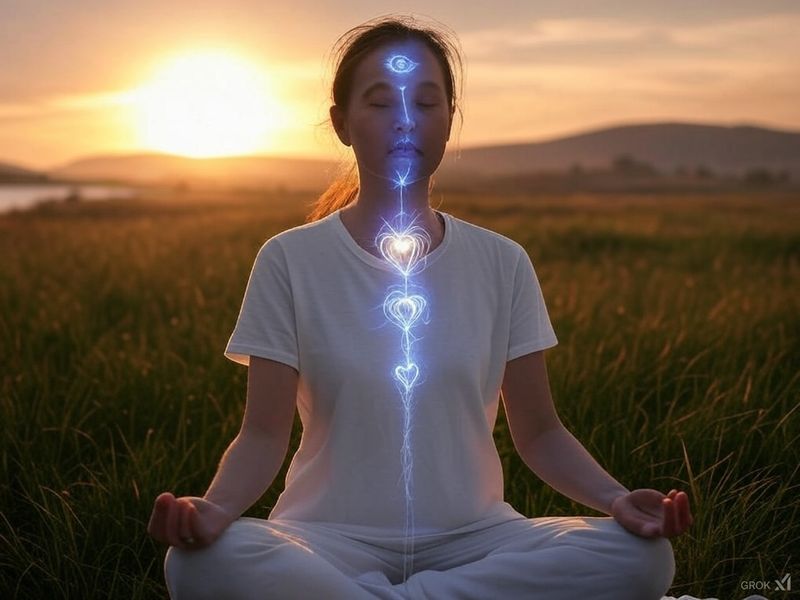Integrating Catalyst: A Path to Healing Physical | 1being

Integrating Catalyst: A Path to Healing Physical and Emotional Pain Thank you for your heartfelt query about physical pain stored in your body, its ties to emotional catalyst, and how acupuncture brings you relief. You’ve asked two key questions: How can I more efficiently integrate my catalysts? and How does this catalyst work with the secondary and tertiary energy fields of the body? Below, I’ll share guidance inspired by Q’uo, crafted to support you on this journey. The tone is clear and encouraging, and I’ve used markdown to make it easy to follow. Summary of Q’uo’s Guidance Q’uo teaches that physical pain is more than a bodily sensation—it’s a message from your whole being: spirit, mind, and body. When this pain connects to unprocessed emotional catalyst, integrating it requires creating an inner space through meditation. There, you can listen to your body, let the pain speak, and offer it love. This practice, alongside seeking help (like your acupuncture sessions), reveals the emotional roots of your pain and its links to your energy centers. Healing comes from this unity and understanding, supported by meditation, contemplation, and prayer. Key Insights for Your Journey Here’s how Q’uo’s wisdom applies to your situation, with practical steps and direct quotes for clarity.
Your Being Is One Whole
Physical pain isn’t separate from your emotions or spirit. It’s a signal from your entire self, asking for attention and integration.
Q’uo says: "A key to understanding your query is to first contemplate and acknowledge that they are indeed not separate, but only seemingly so. And that you are one whole, integrated being on all levels, from your spirit to your mind and to your body."
Build a Foundation with Meditation
Regular meditation helps you know your inner world—your mind and emotions. This is the starting point for connecting with your body’s messages.
Q’uo advises: "We would first encourage, as we typically do, a regular practice of meditation, so that you may become more and more familiar with your inner world that you might identify as your mind."
Let Your Body Speak
In meditation, invite your body into that quiet space. Focus on the pain, let it express itself, and meet it with love. This opens new ways to understand what it’s telling you.
Q’uo suggests: "You can invite into that space your body itself to offer communication to you in a more direct and meaningful way; to focus, you might say, on the pain that you experience; to attempt to allow it to fill that space within yourself, to express itself in the way that it wishes to be expressed."
Explore Your Energy Centers
Your pain ties into your energy fields—primary centers (like chakras) and secondary or tertiary ones (smaller energy points). Meditation will help you see these connections, unique to you.
Q’uo explains: "You can then begin to draw the correlations that you are seeking between the normal primary central energy centers, and the, as you say, secondary or tertiary energy centers."
Seek Help and Offer Love
Asking for support—like your acupuncture sessions or inner calls for guidance—clears the way to understand your pain’s emotional roots. Love is the bridge to healing.
Q’uo encourages: "A regular attempt to call for aid and seek help, both in your practical life, but in your inner life as well, can be very effective in clarifying this inner space and understanding what the communication of pain is attempting to offer to you."
Rely on Meditation, Contemplation, and Prayer
These tools are your allies in processing catalyst. They help you integrate the messages from your body and emotions, leading to relief and growth.
Q’uo summarizes: "The most essential aspects of how to grapple with this catalyst... is to return to our regular recommendations for most circumstances within your third density, and that is the meditation, the contemplation, and the prayer."
Direct Answers to Your Questions
How can I more efficiently integrate my catalysts?
To integrate your catalyst efficiently, start with a daily meditation practice. Find a quiet space, sit comfortably, and breathe deeply to settle your mind. Then, focus on your physical pain—don’t push it away. Invite it to “speak” to you, asking, What do you need me to know? Witness it with love and patience, not judgment. Over time, this helps you uncover the emotional catalyst behind the pain—like unresolved grief or stress—and process it. Pair this with your acupuncture sessions, which already bring relief, and reflect afterward on any emotions that surface. This combination speeds up integration by uniting body and mind.
How does this catalyst work with the secondary and tertiary energy fields of the body?
Your catalyst flows through your whole being—spirit, mind, and body—affecting your energy fields. The primary energy centers (chakras, like the heart or root) are the main hubs, but secondary and tertiary centers (smaller points, often worked on in acupuncture) carry the details of your pain. For example, a blocked heart chakra might show as shoulder pain through a secondary center. In meditation, as you listen to your body, these connections become clearer. You’ll sense how emotional catalyst—like fear or anger—lodges in specific areas, linking primary and secondary fields. This understanding grows naturally as you deepen your practice.
A Final Reflection Your pain is a teacher, pointing to emotional catalyst ready to be healed. Q’uo’s guidance shows that by meditating, listening to your body, and seeking help—like your acupuncture—you’re already on the path. The relief you feel from acupuncture is a sign of progress, and adding meditation can deepen it. Your energy fields are unique, and their language will unfold as you offer them love and silence. Thank you for this question—it’s a beautiful reminder that pain, met with care, can lead to wholeness.